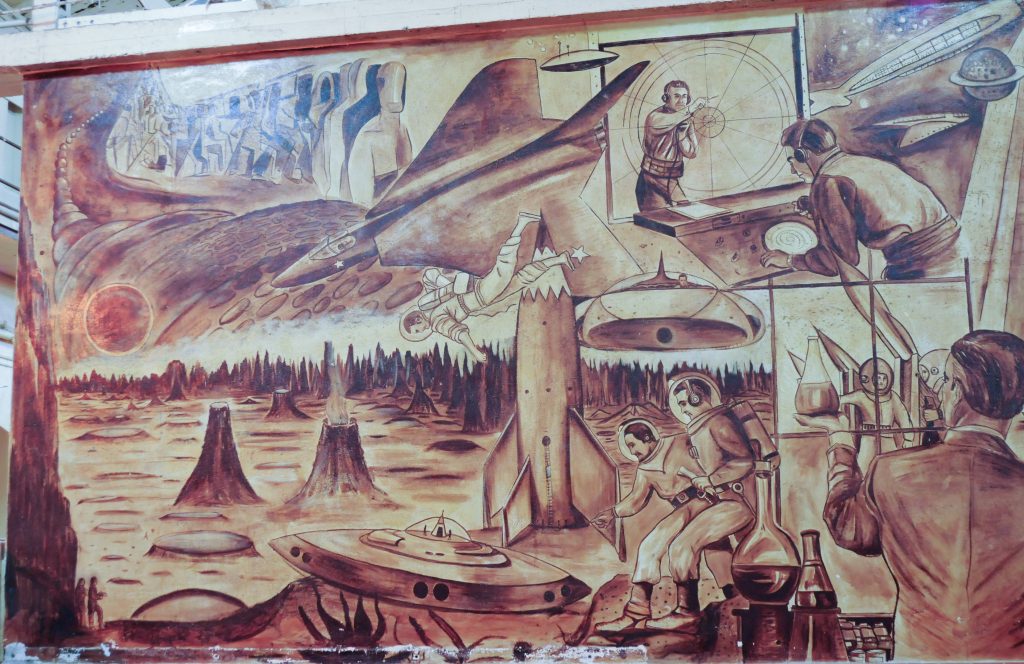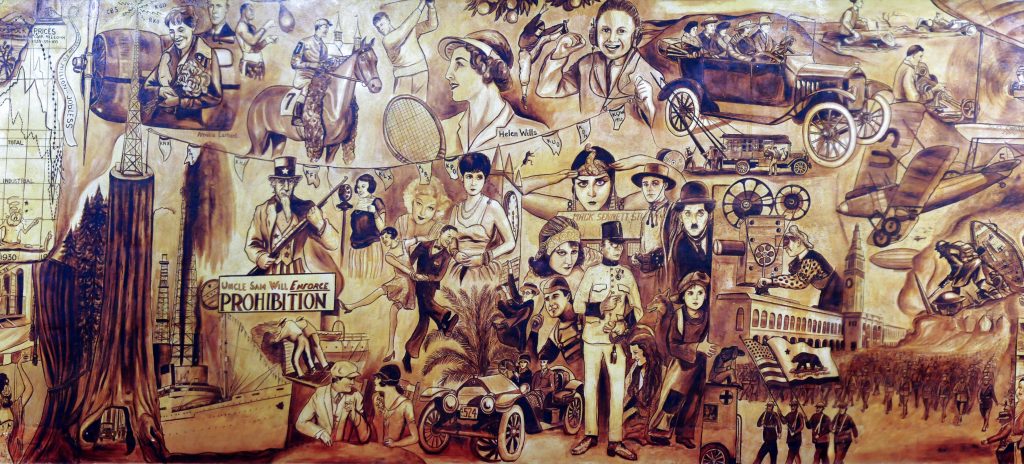
The murals in San Quentin’s dining hall helped launch Alfredo Santos’ art career. 
The space age was documented in the San Quentin mural. 
The murals in San Quentin’s dining hall helped launch the artist’s career.
Murals at San Quentin detail landmarks in history
When Alfredo Santos was sentenced to San Quentin State Prison, he entered an art contest to paint murals in the dining hall. That project, which today is considered a masterpiece and has gone through a series of restoration efforts, helped launch his art career.
In 1953, he started painting what would eventually become a well-known collection of 100-foot-long murals.
“Santos was assigned the job of filling the cafeteria’s blank walls in 1953 after winning a prison art competition. He worked at night for more than two years, aided by two inmate helpers who moved scaffolding, and overseen by a single guard,” the Los Angeles Times reported on May 9, 2008.
Artist opens gallery after parole
“When Santos finished, the warden thanked him for dressing up the chow hall. Santos was paroled after serving four years and returned to Southern California. … Later, he opened a gallery in San Diego and embarked on a long career as a fine artist.”
He recounted in later newspaper articles that he was ashamed of his time in prison and he kept his involvement in the murals a secret. He eventually admitted to being the artist.
“In 2003, Santos was finally identified as the muralist, a story corroborated by retired guards who had served as models for characters. (Prison officials) invited Santos to San Quentin, where he was feted and given an honorary key to the joint,” the newspaper reported.
In his later years, Santos was broke but he was grateful for the recognition his early work received. Santos publicly credited San Quentin for giving him his start as an artist.
He told the newspaper, “It’s too late for me to make any money. … But at least I’m finally being recognized. It’s proof that I existed.”
The first mural is more conservative because Santos said he wanted to keep the prison officials happy. As he progressed, so did his creativity. His last mural was more reminiscent of a cartoon.
“That mural is 100 percent original,” Santos told the New York Times, Aug. 19, 2007. “I wanted to give the guys something to laugh at, but I can tell you that I worked real fast on it, since my parole date was coming up. I didn’t want to give anyone an excuse to keep me.”
Restoring history
According to the New York Times, “restorations were carried out in the late 1960s, when a clear protective coating was applied, and again in the 1990s.”
Retired Associate Warden Richard “Dick” Nelson recalls the 1990s restoration efforts.
“During my tenure as an Associate Warden at San Quentin and president of the San Quentin Museum Association, the murals were becoming damaged from graffiti and the scrubbing to remove it. The museum association, under the guidance of an art professor at California State University, Santa Cruz, purchased the material, paid an inmate to restore them. The professor’s son was a teacher at San Quentin. This was around 1993,” he said.
The artist passed away March 13, 2015.
Related content:
By Don Chaddock, Inside CDCR editor
Photos by Eric Owens, CDCR staff photographer